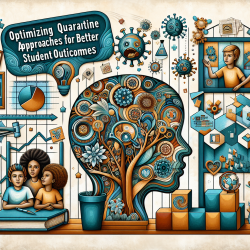Introduction
School refusal is a complex issue affecting adolescents worldwide. Defined as the reluctance or refusal to attend school, it poses significant challenges for educators, parents, and mental health professionals. Recent research utilizing functional near-infrared spectroscopy (fNIRS) sheds light on the psychological characteristics and emotional difficulties underlying this behavior. This blog aims to help practitioners improve their skills by implementing research outcomes or encouraging further exploration.
Key Findings from the Research
The study titled "Psychological characteristics and emotional difficulties underlying school refusal in adolescents using functional near-infrared spectroscopy" provides valuable insights into the emotional and neural mechanisms associated with school refusal. Conducted by Li et al., the research involved 38 adolescents with school refusal behavior and 35 healthy controls. Participants underwent psychological assessments and fNIRS to explore brain function differences.
Psychological Characteristics
The study found that adolescents with school refusal exhibited higher neuroticism scores and lower extraversion scores compared to healthy controls. These personality traits are linked to emotional instability and social withdrawal, contributing to school refusal behavior. Additionally, the refusal group showed elevated scores on depression and anxiety scales, emphasizing the need for attention to their emotional well-being.
Neural Correlates
Using fNIRS, researchers identified significant differences in brain activity between the two groups. Adolescents with school refusal showed altered oxygenated hemoglobin concentrations in the frontal and temporal cortices during cognitive tasks. These findings suggest a biological basis for school refusal, highlighting the potential of fNIRS in early diagnosis and intervention.
Implications for Practitioners
For practitioners, these findings underscore the importance of addressing emotional regulation and cognitive control in adolescents with school refusal. Early intervention strategies should focus on enhancing emotional resilience and social skills. Family involvement is crucial, as family dynamics significantly influence school refusal behavior. Practitioners are encouraged to integrate these insights into their practice and consider further research to refine intervention approaches.
Conclusion
Understanding the psychological and neural underpinnings of school refusal can guide practitioners in developing effective intervention strategies. By leveraging data-driven insights, professionals can better support adolescents in overcoming school refusal and achieving positive educational outcomes.
To read the original research paper, please follow this link: Psychological characteristics and emotional difficulties underlying school refusal in adolescents using functional near-infrared spectroscopy.










